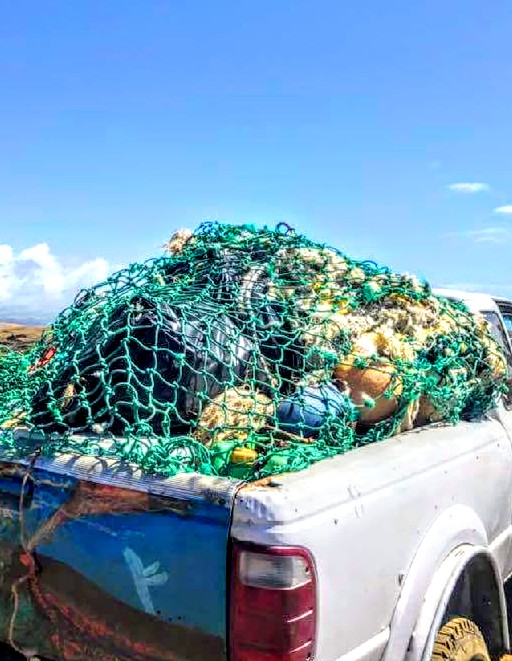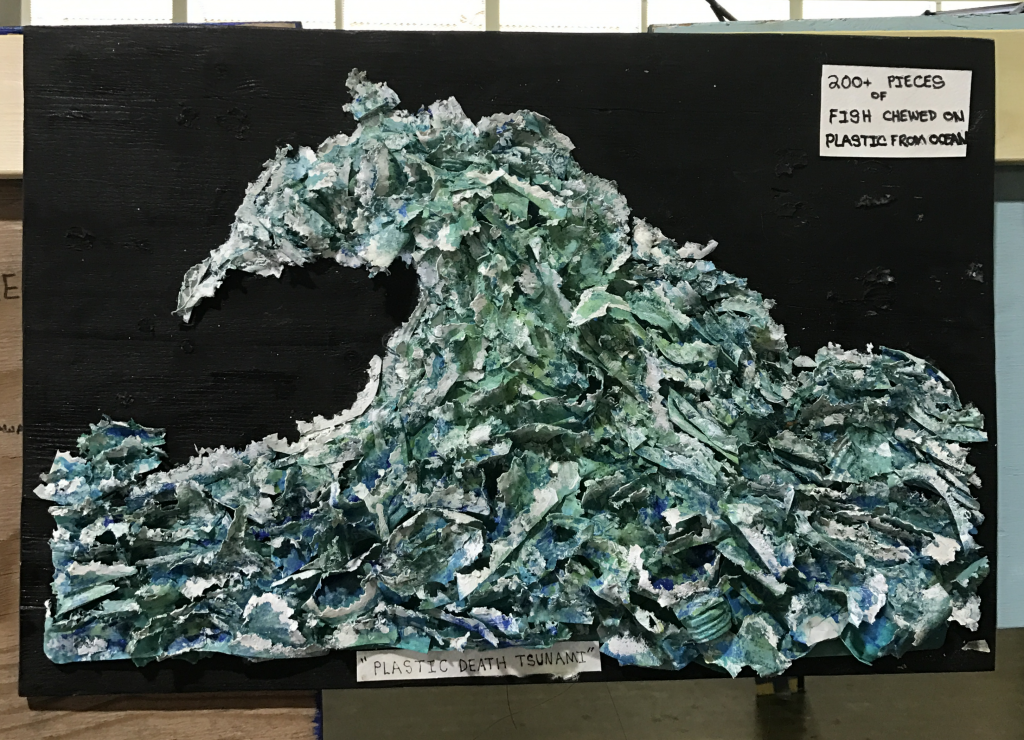Big Island Beaches Covered in Plastic…
Hawaii Wild Life volunteers and island residents are out cleaning the southern beaches here on the Big Hawaii Island today as part of a monthly cleanup and in honor of International Mother Earth Day, April 22, 2017.
In early April, pictures of trash covering Big Island beaches began to circulate through social media.
Don Elwing posted pictures he took on a regular beach cleanup along the southern shores.
“Only a small amount of people actually get to see the pollution washing up because of its remoteness and inaccessibility,” explained Elwing.
Elwing makes art with rubbish he collects.
“I decided to try to bring the plastic pollution to the masses through my Awareness Art and UPCYCLE as much as possible,” said Elwing. “Last year, I upcycled over 600 pounds of plastic and net to several mainland artists.”
He started volunteering with Hawaii Wildlife Fund and quickly realized the enormity of the plastic problem: not only the amount, but the obvious fact that 30 to 40% of this detritus had obvious signs of fish bites—and that it was never going away.
“Cleaning the beaches not only made me feel good but educated me as to what was going on,” explained Elwing.
He said his awareness art caused people to comment over and over, “Really? I never knew.”
Most of the plastic is attributed to the Japanese fishing industry. In addition, a lot of tsunami debris is still washing ashore, along with plastic from elsewhere in world, explained Elwing.
According to More Ocean Less Plastic, 8 million tons of plastic escape collection systems annually and ends up in the world’s oceans. That is equivalent to five large trash bags for every foot of coastline in the world.
Another major concern is the dying coral reefs all around the world.
A compound commonly found in sunscreens has been shown to cause serious harm to corals. The state Department of Land and Natural Resources is asking people who enter the ocean to avoid using sunscreens which contain oxybenzone.
Recent studies have shown that oxybenzone causes deformities in coral larvae (planulae), making them unable to swim, settle out and form new coral colonies.
It also increases the rate at which coral bleaching occurs. This puts coral reef health at risk and reduces resiliency to climate change.
There are reef safe sunscreens available at most retailers.
The DLNR is already taking active steps to help reduce the presence of oxybenzone in reserves.
To learn more about our coral reefs, download this sunscreen bulletin .
To learn more about what you can do to help our reefs, go online.
In addition, below are just a few family-friendly sustainability activities that residents can adopt today:
- Plant a tree, or start a garden
- Give away stuff you don’t need
- Reduce, reuse, recycle
- Buy locally at the farmers’ markets
- Replace disposables
- Pick up trash that is not your own
- Conserve water, energy and resources
- Use reef-safe sunscreen
- Use non-toxic cleaners and hygiene products
- Volunteer to clean beaches, parks and areas in the community
To learn more about sustainability and actions you can take, go online.
“Taking care of this planet that is our only home is not just the responsibility of governments and large organizations, although, of course, they have a role,” the Dalai Lama said. “The whole of humanity, each of us as individuals, has a responsibility. We have to consider seriously whether we can indefinitely keep up the materialistic way of life we’ve got used to.”


















